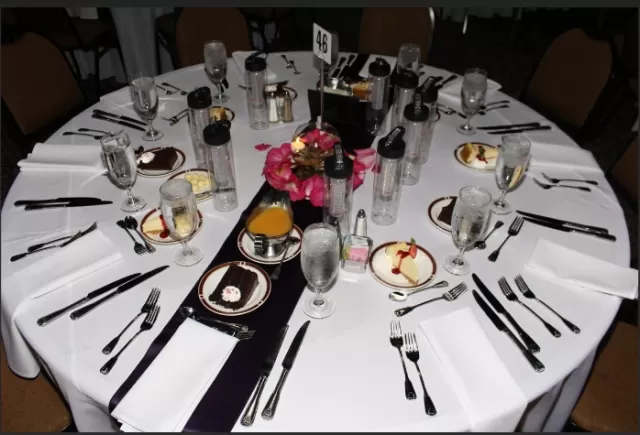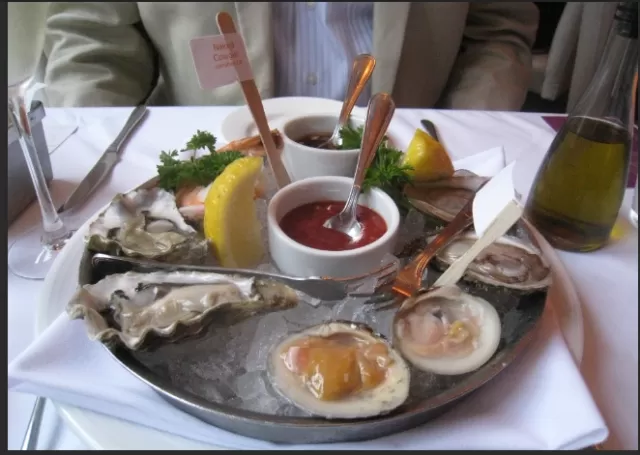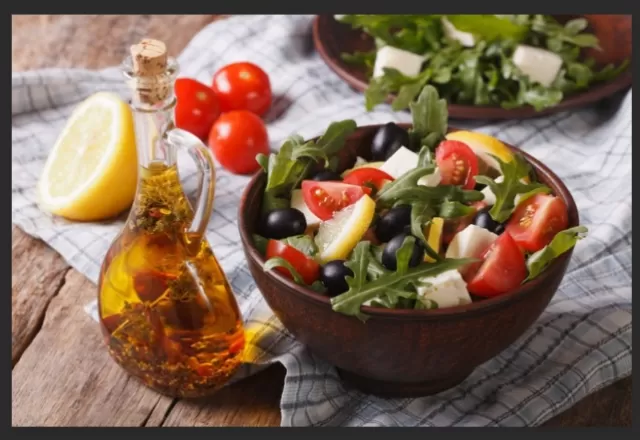Setting a Formal Dinner Table: Expert Etiquette Guidance. Setting a formal dinner table is an art that speaks volumes about your attention to detail and hospitality. It’s a gesture that showcases your care for your guests and elevates the dining experience. Yet, navigating the intricacies of utensil placement, plate transitions, and glass arrangements in formal table setting etiquette can indeed pose challenges. Let’s explore this refined artistry together, drawing insights from etiquette experts, to guide you through each course from start to finish.
The first step in setting a formal table is understanding the layout for each course, from the initial to the final. Properly arranging utensils, plates, and glassware ensures a seamless dining experience that speaks of sophistication and grace.
Etiquette experts emphasize the significance of a well-orchestrated table setup, starting from the first course and progressing through subsequent courses until dessert. Each stage requires meticulous attention, from knowing which utensils to use for specific dishes to the strategic clearing and placement of plates.
Whether it’s the delicate arrangement of cutlery for the main course or the strategic addition and removal of plates throughout the meal, etiquette experts provide invaluable guidance on creating a harmonious and aesthetically pleasing table setup. Additionally, understanding the appropriate number of glasses and their placement at each setting adds another layer of finesse to the formal dining experience.
By following the guidance of etiquette experts, you can navigate the intricacies of a formal table setting with confidence and grace. The knowledge and expertise shared by these experts serve as a valuable compass, ensuring that your table settings reflect elegance, sophistication, and, most importantly, the genuine care you extend to your guests throughout the dining experience.
Mastering the Art of Formal Settings: Why Every Host Should Acquire this Essential Skill

Setting a formal table isn’t just reserved for grand dinner parties or special occasions; it’s a fundamental skill that every host should possess.
Even in the absence of an imminent soirée, the ability to arrange a formal table offers valuable insights into the intricacies of hosting and attending formal dinners. According to Jung Lee, esteemed event planner and founder of Fête, understanding the nuances of a proper place setting is akin to mastering one’s manners.
Learning the art of formal settings is not an arcane practice but a practical skill that enhances your social grace and cultural fluency.
It provides a foundation for creating a refined dining experience, whether hosting an intimate gathering or attending a formal event. Much like learning manners, understanding the structure of a proper table setting is not a convoluted equation but a logical arrangement.
Once acquired, this knowledge becomes ingrained, and the art of setting a formal table becomes second nature.
Beyond the immediate practicality, the ability to arrange a formal table adds an aesthetic dimension to your hosting repertoire.
It transforms ordinary meals into elegant occasions, elevating the overall dining experience for both you and your guests. In essence, the mastery of formal settings is a valuable life skill, contributing to your confidence and sophistication as a host or guest.
So, whether it’s a grand celebration or an intimate dinner, the art of setting a formal table is a timeless and indispensable skill that transcends occasions, making every dining experience a refined and memorable affair.
Creating a Refined Atmosphere: Tips for Setting a Formal Dinner Table
Setting a formal dinner table requires thoughtful consideration to ensure a sophisticated and welcoming ambiance.
Here are some helpful tips to guide you through the process:.
Streamline Utensils: Limit the display of utensils to a maximum of 12 at a time.
This modern approach avoids overwhelming guests and promotes a more comfortable dining experience, according to Maryanne Parker, founder of Manor of Manners.
Utilize Place Cards: For gatherings with more than four guests, consider using place cards to designate seating.
Jodi Smith, etiquette expert and founder of Mannersmith Etiquette Consulting, suggests that place cards or a polite host directing guests to their seats add a touch of elegance. Remember, if using place cards, arrange them for your guests, not for yourself.
Mindful Napkin Placement: Avoid placing napkins underneath the forks, as it can create noise and disrupt the setting when guests reach for them.
According to Smith, this small adjustment contributes to a more gracious dining experience.
Plan Drinkware and Servingware: Anticipate the flow of the entire meal, from the first course to the final dessert, and plan the placement of drinkware and servingware accordingly.
If toasts are on the agenda, strategically position champagne glasses furthest to the right, making it convenient for guests to raise their glasses, as recommended by Smith.
By adhering to these tips, you can transform your Dining Table into a refined setting that enhances the overall dining experience for both you and your guests.
Creating an atmosphere of sophistication and ease contributes to the success of any formal dinner gathering.
Preparing for the Culinary Journey: Setting the Stage Before the First Course

As guests settle into their seats, the initial setup of each place setting sets the tone for the upcoming dining experience:.
Charger Plate: Begin by placing a charger plate at each setting, to be removed once guests unfold their napkins onto their laps.
On the right side of the charger, position knives and spoons with their blades facing inward, while forks align to the left. Maryanne Parker advises that the cocktail fork, typically found inside the soup spoon, is the only fork allowed on the right side.
Bread-and-Butter Plates: Above the forks and to the left of the place setting, arrange the bread-and-butter plates.
These plates remain in place throughout the meal, staying put until the dessert course.
Stemware Placement: Elevate the table setting by positioning stemware above and to the right of the dinner plate.
The arrangement typically includes the water glass situated above the dinner knife. Adjacent to the water glass, place the white wine glass to its right, while the red wine glass takes its place at the top center.
This meticulous arrangement not only ensures an aesthetically pleasing display but also contributes to the functionality of the table setting.
It sets the stage for an elegant dining experience, laying the groundwork for the culinary journey that awaits.
Setting the Stage for Soup Service: Etiquette and Protocol
When presenting soup in a formal setting, the arrangement of the tableware follows a refined protocol.
The heated soup dish takes center stage atop a dinner plate, offering an elegant foundation for the dining experience. The soup spoon, a quintessential utensil for this course, gracefully resides at the outer right of the place setting, ready to complement the culinary delight served.
As the meal progresses, a subtle yet significant dining custom comes into play.
When each guest has completed their soup, the cue to remove the soup-related tableware is when they delicately place their soup spoon across the upper right-hand corner of the plate. This signal signifies that the diner has concluded this course, prompting the discreet removal of the soup bowl, plate, and spoon from the table.
The positioning of the spoon varies slightly depending on the presentation.
When soup is accompanied by a plate, the resting place for the spoon is within the bowl itself. Once the soup course concludes, the finished position for the spoon is across the top of the plate, discreetly positioned behind the soup bowl.
However, in instances where a plate is not part of the presentation, the protocol shifts accordingly.
Both the resting and finished positions for the spoon reside within the bowl. This distinction highlights the nuanced intricacies of formal dining etiquette.
An essential aspect to note is that once a utensil has made contact with food, it should never touch the tablecloth again.
This adherence to dining decorum preserves the elegance of the setting and upholds the refined atmosphere throughout the meal.
Mastering the subtleties of table setting and dining etiquette enhances the dining experience, elevating it beyond mere consumption to a graceful and sophisticated affair.
Crafting a Refined Salad Setting: Etiquette and Transition

When presenting a salad course in a formal setting, attention to detail in table setting and etiquette becomes paramount.
The salad is elegantly arranged on a midsize plate, setting the stage for a delightful and refreshing interlude in the meal. The designated utensil for this course is the remaining fork, easily identifiable by its broader end tine, which not only facilitates salad consumption but also serves for cutting if needed.
As the salad course concludes, a seamless transition occurs in the table setting.
The removal of items associated with the salad course signifies the anticipation of what follows. The bread-and-butter plate, along with the butter knife, gracefully exit the tableau, creating a clean and uncluttered space for the next culinary chapter.
Both Wine Glasses, having played their part during the salad course, are also cleared, allowing the table to take on a refined simplicity.
In this orchestrated dining symphony, the salad plate and fork join the procession of departing items, leaving the table elegantly set for the impending dessert course.
This meticulous attention to the progression of tableware reflects not only an adherence to tradition but also a commitment to creating a visually pleasing and well-organized dining experience.
As the meal unfolds, each course contributes to the evolving aesthetic of the table setting.
The thoughtful removal of specific items after the salad course not only paves the way for the dessert course but also maintains the elegance and sophistication that characterize formal dining. This culinary choreography, blending functionality with aesthetics, ensures a seamless and memorable dining experience for both hosts and guests alike.
*The information is for reference only.